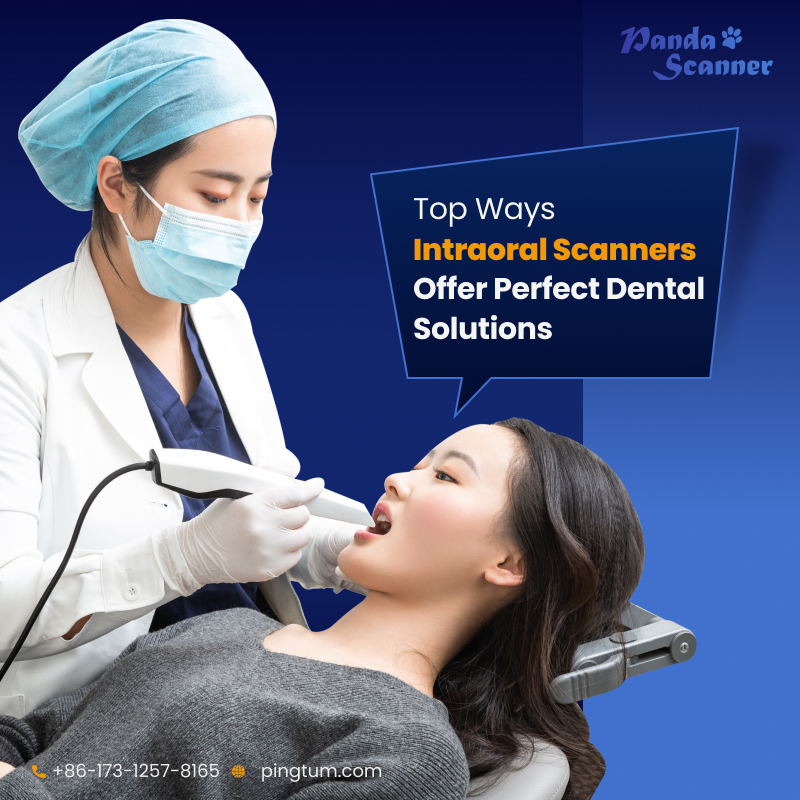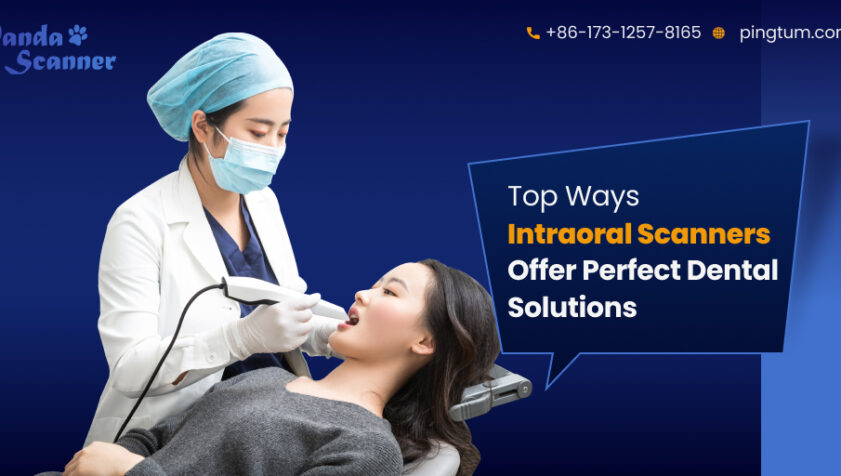It is a known fact that dentistry is far more advanced today than it was twenty years ago. Earlier, patients hated the idea of visiting a dental clinic because it was messy, time-consuming, and quite uncomfortable. However, over time, dentistry has evolved a lot. And a specific type of device that has made its presence known in the field of dentistry and is highly popular for obtaining dental impressions is the intraoral scanner. It’s a handheld device that creates a digitaldental impression of the oral cavity. In order to scan objects like complete dental arches, a light source from the scanner is projected to create a 3D model that is displayed on the digital screen.
The benefits of investing in intraoral scanners are numerous. It improves your professional setup, leads to lower material costs, and improves patient satisfaction. Furthermore, the use of the latest technology improves the quality of your diagnosis significantly. In this blog, we will discuss some of the top ways intraoral scanners can help dentists.

Top 5 Ways Intraoral Scanners Offer Perfect Dental Solutions
The intraoral scanner has extended the scope of dentistry unimaginably. And, simultaneously, it has made dental treatments both dentist and patient-friendly. Read on to learn more.
#1 Creates a Systematic Workflow
Intraoral scanners can increase productivity and create an efficient workflow in dental clinics by reducing the time and labor associated with traditional impression methods. They improve the predictability and accuracy of your diagnosis and treatment. Added to that, an intraoral scanner, such as the PandaP2 intraoral scanner, eliminates the potential for human error and can capture every detail of a patient’s teeth and gums, resulting in more precise and accurate restorations. This allows dentists to see more patients and provide better care, helping them increase the efficiency of their dental processes.
#2 Improves Patient Experience
By using intraoral scanners in your clinics and laboratories, you can offer patients a single appointment window for diagnosis and treatment. The perfect scanned images eliminate the risk of preparing imperfect or ill-fitting restorations. Further, if a restoration is damaged while being fitted into a patient’s mouth, the same can be reproduced quickly by merely referring to the scanned images stored in the computer. Besides, the patients can view the entire process and feel excited about the whole thing. They do not have to worry about holding temporary restorations in their mouths only to have them replaced a few days later. Instead, they can go back home with permanent solutions to their dental problems.
#3 Allows You to Plan the Line of Treatment
The scanned images obtained from an intraoral scanner let patients understand the condition of their buccal cavity and how the restorative service can help. Scanning helps the dentist plan the line of treatment and reduces any chances of errors, especially when communicating with the laboratory to craft restorative devices such as crowns, aligners, or implants.
#4 Ensures Safety
A great advantage of the intraoral scanner is that it doesn’t emit any harmful radiation while being used during treatment. When the oral cavity of the patients is scanned with the intraoral scanners, they are not exposed to an unsafe amount of radiation at all. This is because high-quality intraoral scanners are made with visible light radiation and not x-ray radiation. Also, given that the energy levels of electromagnetic radiation are so low that they do not harm biological tissues.
#5 Saves Time
Earlier, taking a correct impression was a time-taking process. In those times, dentists had to go through several complex steps to get the correct measurements of the contours of the teeth before sending them to the laboratory. However, with intraoral scanners, dentists can save a lot of time. Compared to conventional technology, an intraoral scanner has IOS, which is much faster and saves a lot of time. With the inception of the intraoral scanner, patients don’t have to sit in a chair for hours to receive treatment.
The Bottom Line:
Dentists around the world are gradually investing in dental scanners to derive a slew of benefits. The use of an intraoral scanner in a dental clinic has a far greater impact on the patient’s psyche than what could possibly be achieved with conventional treatment.






